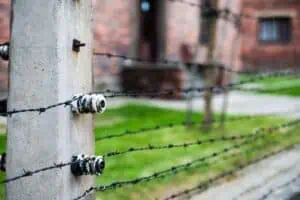How to Build a Vinyl Fence Gate?
A vinyl fence gate adds a decorative touch to any yard. It allows a person to easily leave or enter their property and provides privacy and security. The gates are available in a variety of styles and colors. They also come with hinges that allow them to swing back and forth from their posts.
(Searching in Google “Missoula peak fencing“? Contact us today!)

When installing a gate, be sure to use sturdy fence posts. They need to support the weight of the gate, so be sure to dig holes deep enough for them. They also need to be secured in place with a concrete base that’s sloped away from the post to keep rainwater from pooling around them.
Once you’ve installed the main and end posts, it’s time to install fence rails. These fence posts are similar to end posts, but they are a bit longer. They’re typically used to support the fence’s gate opening, which is why they need to be deeper than end posts.
Slide a fence rail into a rail bracket on each fence post and secure them with screws, following Ply Gem’s instructions. You may need to use a level to ensure that the rails are straight and plumb.
After all the fence rails are set, you can assemble your vinyl fence gate. This step is easy if you have someone help you, but it can be tricky if you don’t have someone to help you.
Measure the distance between the top and bottom of the gate and the gate post (Photo 2). It should be a minimum of 2 inches wider than the width of the gate and 2 inches wide to allow room for the gate hardware and motion of the gate. If the space is too narrow, it will scrape against the ground or swing out of position when you open and close the gate.
Be sure to mark the spot on the ground with a spray paint or marker where you’ll attach the gateposts. Then, using a power auger, drill two holes for the gateposts and one for each fence post in the fence row.
Make sure to plant your fence posts well and to drop metal stiffeners into them if needed. This will help them stand up to the pressure of the gate’s hinges and latches, and it also helps the posts withstand any bumping or knocking.
If you have a sloped lawn, be sure to check that each fence panel is level. It’s easy to miss the slope if you measure your posts with your measuring tape directly on the lawn.
When the post is firmly set, pour concrete into the hole. The concrete should be about 30 inches deep, according to Hoover Fence. Then, fill the posts to the top with 6 inches of gravel, which will help drain water from the post.
Before concrete sets, be sure to adjust the fence posts to ensure they’re plumb and level. You can do this with a string tied between them, or you can use a carpenter’s level.

